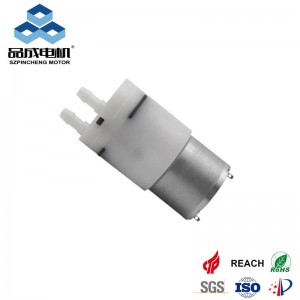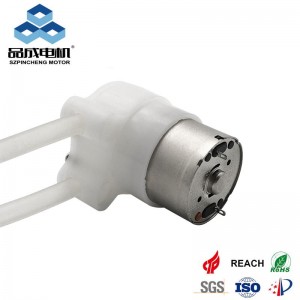Micro water pumps supplier
12V diaphragm pumps are the silent heroes of DIY projects, caravans, medical devices, and automation systems. Their secret? A clever combination of electromagnetism and flexible mechanics that turns tiny electrical pulses into powerful suction or pressure. Let’s break down how they operate—and why they dominate portable applications.
The Core Mechanism: 4 Simple Steps
-
Power On:
-
12V DC current flows through the pump’s coil, creating an electromagnetic field.
-
-
Diaphragm Pull:
-
The magnetic field yanks a metal rod attached to a flexible diaphragm (like rubber or Teflon®), stretching it backward.
-
Result: Chamber volume increases → creates vacuum → sucks fluid/air through inlet valve.
-
-
Diaphragm Push:
-
Current cuts off → spring forces diaphragm forward.
-
Result: Chamber shrinks → pressure builds → fluid/air expelled through outlet valve.
-
-
Repeat:
-
50–100 cycles per second (driven by motor pulses) = continuous flow.
-
Key Insight: One-way flapper valves (inlet/outlet) act like "check doors," ensuring fluid moves only forward.
Why 12V? The Voltage Sweet Spot
-
Portability: Works with car batteries, solar panels, or portable power banks.
-
Efficiency: Converts 80%+ electrical energy into mechanical action (vs. 60% for AC pumps).
-
Control: Speed adjusts via voltage tweaks (9V=slower, 12V=full power, 14V=turbo).
Diaphragm Pump vs. Other 12V Pumps
| Feature | Diaphragm Pump | Piston Pump | Rotary Vane Pump |
|---|---|---|---|
| Seal Integrity | ★★★★★ (Leak-proof) | ★★★☆☆ (Seal wear) | ★★☆☆☆ (Oil leaks) |
| Dry-Run Safe | YES (No internal friction) | NO | NO |
| Pressure Range | 1–100 PSI | 20–500 PSI | 5–30 PSI |
| Noise Level | 45–60 dB (Library whisper) | 70+ dB (Loud) | 65+ dB |
| Best For | Water/Air transfer, labs, automation | High-pressure sprayers | Light vacuum tasks |
Example: Pincheng’s PYP370-XA (12V, 3 LPM airflow, 60dB) powers portable oxygen concentrators.
Real-World Applications
-
Auto/RV Life:
-
Transfers fuel, empties wastewater tanks, inflates mattresses.
-
-
Medical Devices:
-
Portable ventilators (precise air dosing), dental suction.
-
-
DIY & Agriculture:
-
Aquaponics water circulation, 3D printer cooling.
-
-
Automation:
-
Robotic grippers, packaging machines.
-
3 Crucial Maintenance Tips
-
Avoid Dry Running: >2 minutes without fluid causes overheating (add a fluid sensor).
-
Clean Valves Monthly: Debris clogs flapper valves → reduces flow (use filtered inlets).
-
Check Diaphragms: Replace every 10,000 hours (cracks cause pressure loss).
Future Tech: Smarter, Tougher Pumps
-
Brushless DC Motors: 50,000-hour lifespan (vs. 20,000 for brushed).
-
IoT Pumps: Bluetooth pressure tuning (e.g., adjust flow via phone app).
-
Self-Lubricating Diaphragms: Teflon-Kevlar blends handle chemicals like gasoline.
Why Engineers Choose Diaphragm Pumps:
"They’re the Swiss Army knife of fluid transfer—reliable with dirty water, air, or even aggressive chemicals."
— Fluid Systems Engineer, Pincheng Motor
Ready to Harness 12V Suction?
Whether building a camping shower or a lab robot, diaphragm pumps turn battery power into silent, dependable flow. For industrial-grade durability, explore Pincheng’s 12V series—engineered for 50,000+ cycles and IP65 weather resistance.
you like also all
Read More News
Post time: Aug-07-2025




